By Rick VanSickle
There’s no getting around it, as years go, 2020 sucked. It really, really sucked. But two things that didn’t suck were the quality of the Niagara wines released in 2020 and the near-perfect 2020 grape harvest.
Note: Watch for Stephen Beaumont’s top Niagara spirits list coming soon to Wines In Niagara
As I cobbled together the annual Wines In Niagara Most Thrilling Wines of the Year list, the first cut had over 60 wines worthy of being included. I spent a great deal of time labouring over it, adding, subtracting and slashing it down to the 10 Top Reds and 10 Top Whites. Even as I write this, I’m rethinking the choices made here and asking myself: Is the list representative of what does best in Niagara? Does it fairly represent all Niagara wines? Should we even do a list in this the Year of COVID?
I don’t know about the first two questions, but you have the answer to the third question — of course we should, maybe now more than ever do we need to celebrate the great work in the face of some awfully tough challenges for the local wine industry, which has been under siege since the pandemic started last March.
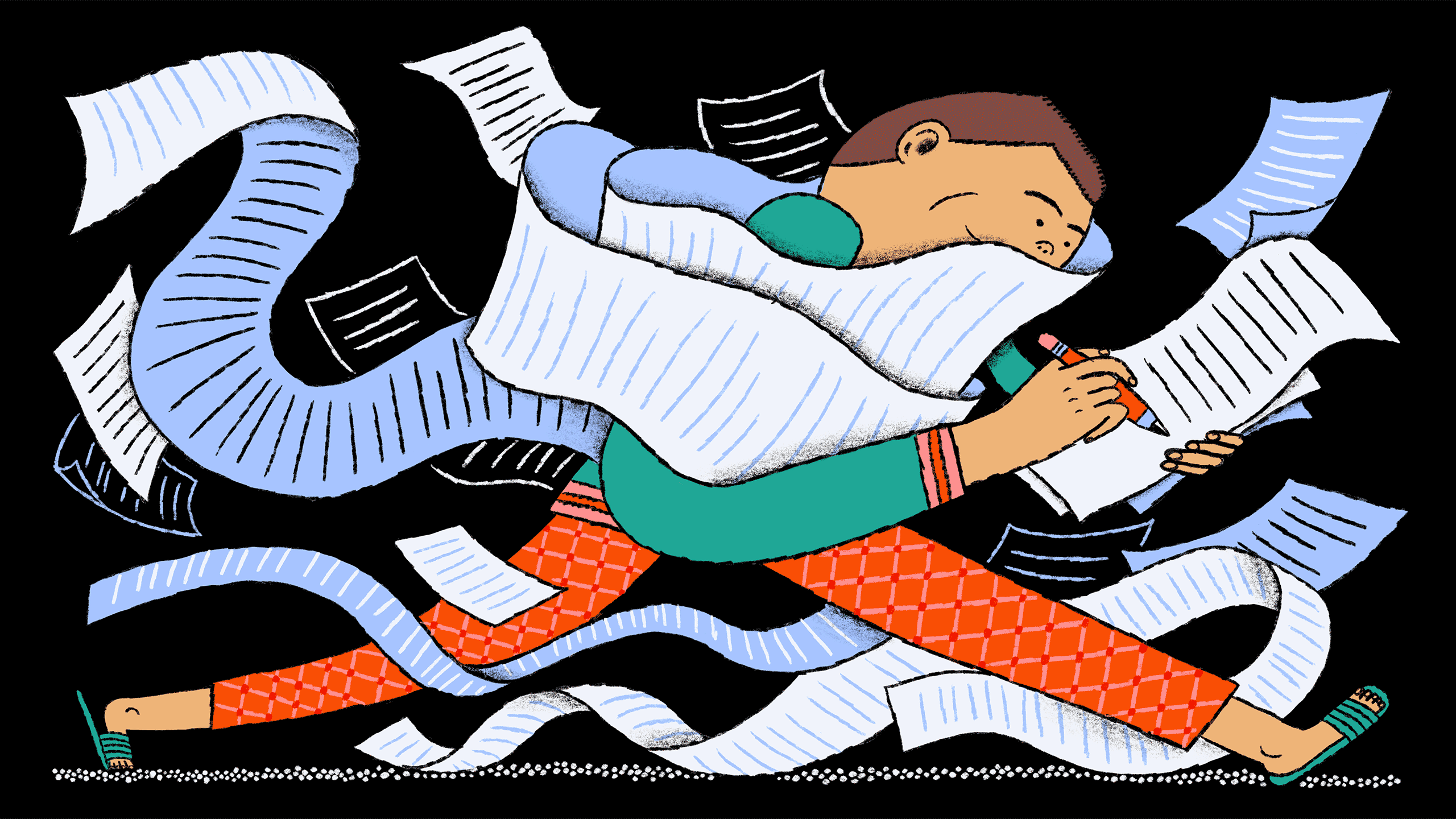
This “best of” list, the 12th annual published by Wines In Niagara, is garnered from the hundreds of wines tasted and reviewed on this website since last January in over 120 separate posts. Curating the list is an agonizing and heart-wrenching endeavour that causes many a sleepless night and added end-of-year stress that’s never in short supply this time of the year. But, hey! No one ever said this job was going to be easy.
It is not my intent to claim these wines are the absolute best Niagara has to offer — because, without tasting each and every wine, how could I? I simply could not seek out every wine that was released in a given year in Niagara, and especially in a year that restricted visits to many wineries because of the virus. It is a subjective list that is culled from the wines that I (and Michael Lowe) have tasted, some re-tasted, and others even re-evaluated. It is based on the thrill factor and not necessarily on points given (although the average score of the wines on this list is 93+). I realize that not all palates align with mine and there will be many wines that might raise an eyebrow or two. That is exactly what makes wine enjoyment so fascinating.
I have also implemented a few rules for the list.
• Spread out the love, which means only one appearance on the list per winery (it’s not a hard and fast rule as one winery snuck into both the red and white category);
• 10 Chardonnays or 10 Rieslings or 10 Pinot Noirs or 10 Cabernet Francs would be boring, think outside the box (although, the list is dominated by Pinot Noir and Chardonnay);
• The 10 Most Thrilling Niagara Red and White wines of 2019 are listed in alphabetical order with the original scores removed (you can search the site if you are really interested in the score). I thought it was an accomplishment to just make the list, no matter if your wine got 88 or 100 points. And, P.S., if you get the feeling that sparkling wines have been neglected on this list, fear not — we will have a roundup of the most thrilling bubbles posted soon, just in time for New Year’s.
Drum roll, please …
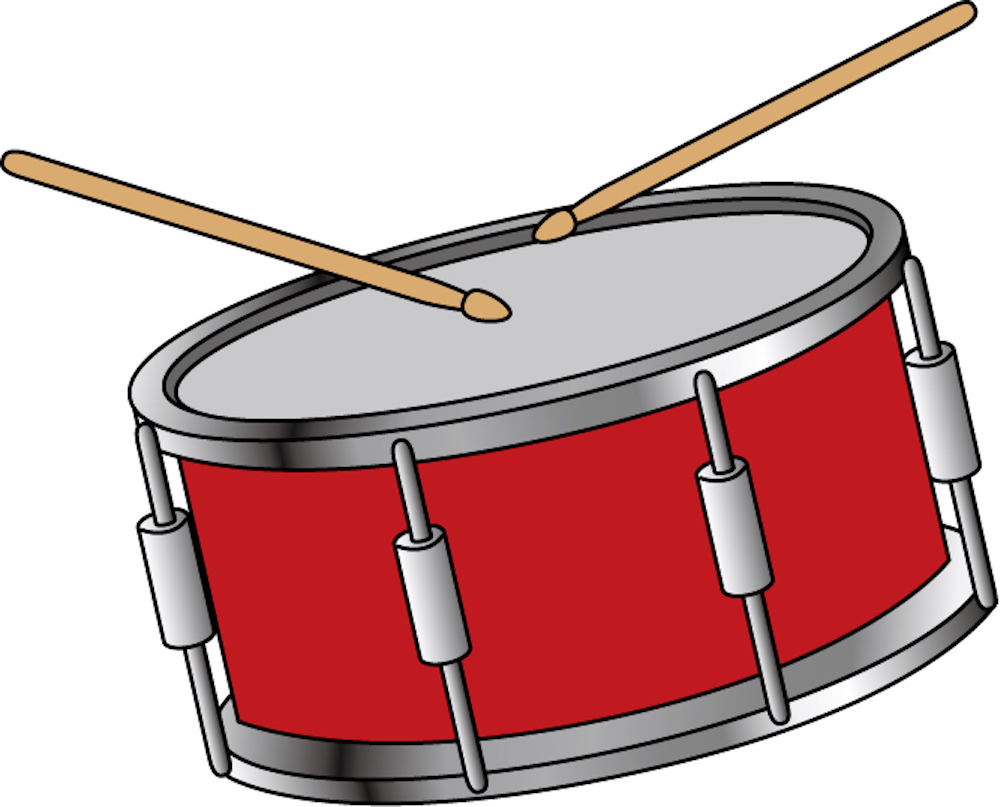
And the winners are …
The Most Thrilling Red of the Year is the Le Clos Jordanne Le Grand Clos Pinot Noir 2018 and the Most Thrilling White of the Year is the Leaning Post Senchuk Vineyard Chardonnay 2018.
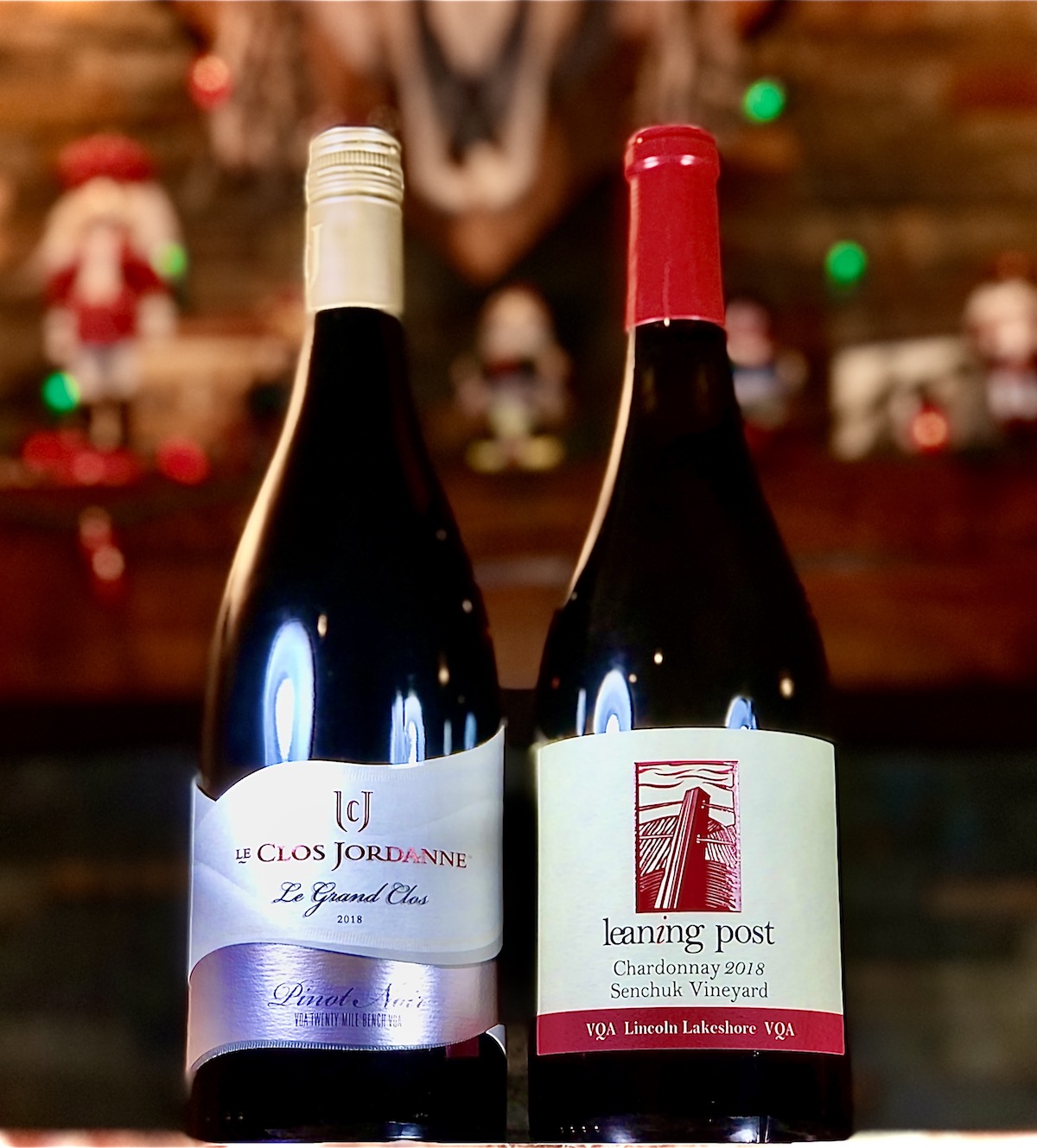
It’s not the first time a Le Clos wine has made this list. The Le Clos Jordanne Le Grand Clos Pinot Noir 2010 made the list when it was a relative newcomer on the scene, and the last time a Le Clos wine appeared it was the Le Clos Grand Clos Chardonnay last year. This thrilling Pinot made by Thomas Bachelder (no stranger to this list) is the best yet and is a brilliant representative of where Pinot Noir is going in Niagara. At the top level, mostly single-vineyard examples such as the Le Clos, it is fair to say Pinot Noir is a superstar grape in Niagara and as the vines get older and growers plant smarter, the sky is the limit for Pinot not only here, but across this country’s main wine growing regions.
As for the Senchuk Chardonnay, what a year winemaker Ilya Senchuk and his wife Nadia are having. Leaning Post is a feel-good story, a story of perseverance, good luck and hard work. And a lot that hard work took place in 2020 — during a pandemic. The couple tackled a huge renovation (even after construction was shut down for three months because of COVID), planted new vines (Dolcetto, anyone?), bottled their first traditionally made sparkling wine and continued to up their game with some big releases in 2020. To top it all off, the Senchuk Vineyard Chardonnay, from vines planted in the home farm’s fallow field after the couple bought the property in Winona when they didn’t know what they had, is proving itself a worthy member of Chardonnay aristocracy in Niagara. It’s a club that has many world-beaters in it from a grape that thrives so well in the Niagara and Ontario region.
Fun with numbers:
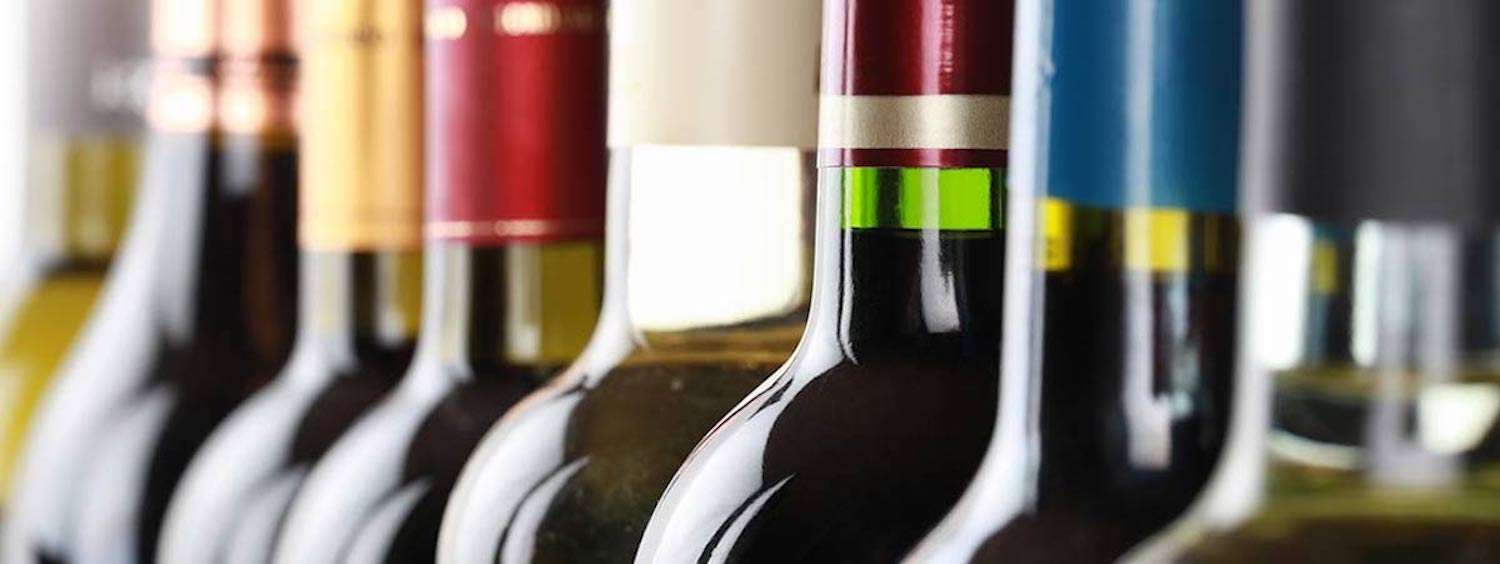
• Total price of white wines on this list: $367 (down from $389 last year)
• Total price of red wines on this list: $611 (down from $714 last year)
• Most expensive white: $48, Bachelder Wismer-Wingfield Ouest Chardonnay 2018
• Least expensive white: $20, Vineland Estates Elevation Riesling 2019
• Most expensive red: $90, Domaine Queylus La Grande Réserve Pinot Noir 2015
• Least expensive red: $35 for Flat Rock Cellars Gravity Pinot Noir 2017
• Average price for all wines on the both lists: $48.90 (down from $55.15 last year).
• Average score Wines In Niagara awarded the red wines: 93.6
• Average score Wines In Niagara award the white wines: 93.2
• What it would cost for you to buy them all: $978 ($125 less expensive than last year).
• Number of Chardonnays on the list: 6 (there were 8 last year)
• Number of Rieslings on the list: 4 (there was only one last year)
• Number of Pinot Noirs on the list: 5 (there were 3 last year)
• Number of Cabernet Francs on the list: 1 (there were 3 last year)
• Number of red blends on the list: 3
• Number of Syrahs on the list: 1
The Most Thrilling Niagara
Red Wine of the Year
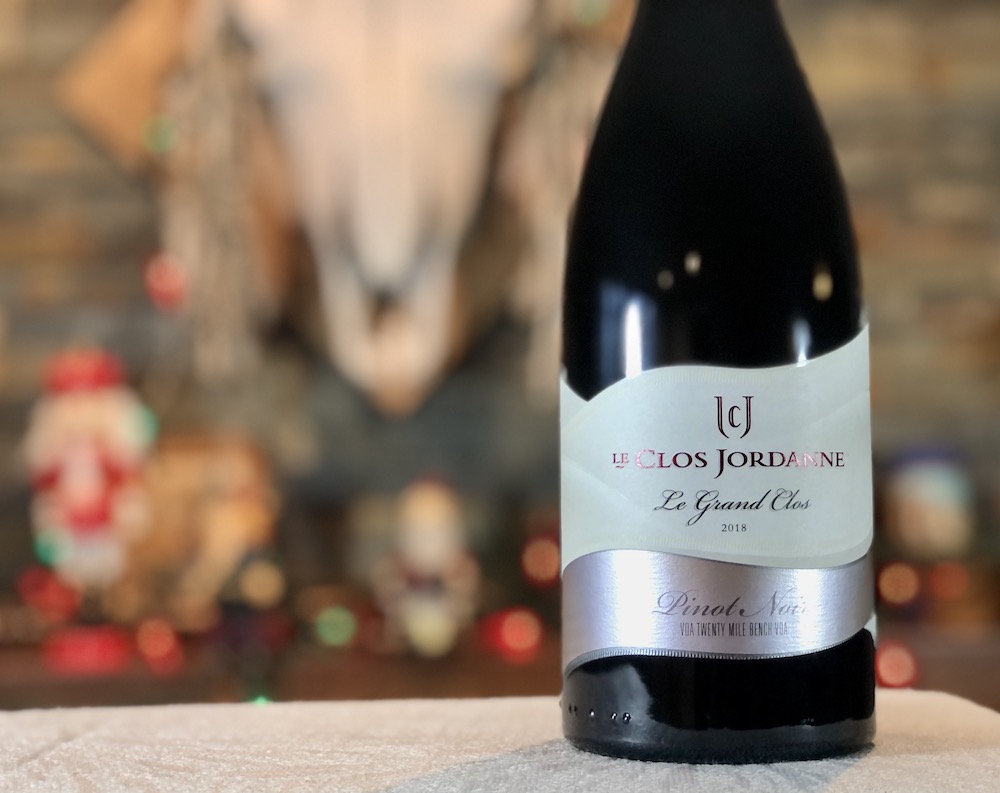
Le Clos Jordanne Le Grand Clos Pinot Noir 2018 ($45) — This vintage just might be the finest Le Clos made by winemaker Thomas Bachelder. It’s highly perfumed on the nose with brambly underbrush, forest berries, black cherries, field raspberries, subtle cassis fruit, elegantly nuanced oak spices and a floral high note that builds in intensity with each sniff. The deeply floral and perfumed vein transfers to the palate with an explosion of dense, layered and savoury red berries through a structure that sports tight grained tannins and a beautifully finessed finish that lingers forever. After tasting the decanted version, I have no doubt this will improve for 8+ years in the cellar. The floral/perfumed notes were elevated, the fruit was denser and more generous and a subtle mineral note was starting to emerge. Great things are coming for this blockbuster of a Pinot from one of Niagara’s top terroirs. Bachelder’s suggestion for cellaring is to drink from 2021 to 2032.
The Rest of the Most Thrilling
Niagara Red Wines of the Year
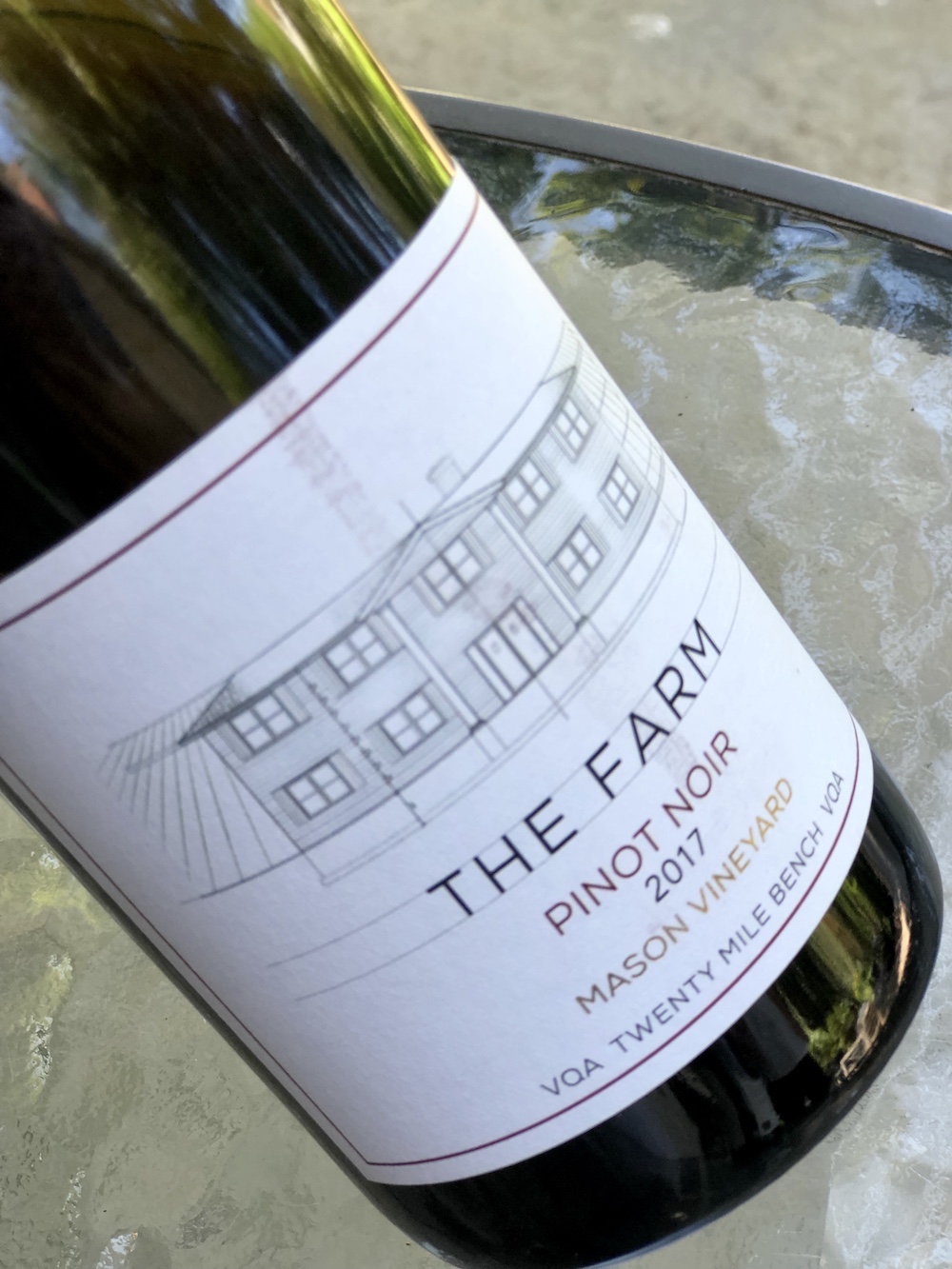
The Farm Mason Vineyard Pinot Noir 2017 ($50) — Winemaker Kelly Mason’s own vineyard, which is 30+ years old, is planted to mostly Pinot Noir with some Cabernet Franc and Cabernet Sauvignon. The Farm started purchasing the fruit for Mason to make into a single-vineyard Pinot in 2015. Like the previous vintage, it’s tighter and more reserved at the moment than the Neudorf, and shows a deeper red colour in the glass. After swirling and coming back to it, the nose shows a full range of dark cherries, brambly raspberries, earthiness, cranberries, cassis and anise with toasty oak accents and earthy minerality. While it still has to open up on the palate, it’s already showing power, complexity and concentration with ripe red berries, cassis, anise, a rich vein of minerals, grippy tannic structure, toasted spice notes and juicy acidity through a long finish. Needs time for fully open up, but will be worth the wait. Say, 5+ years.
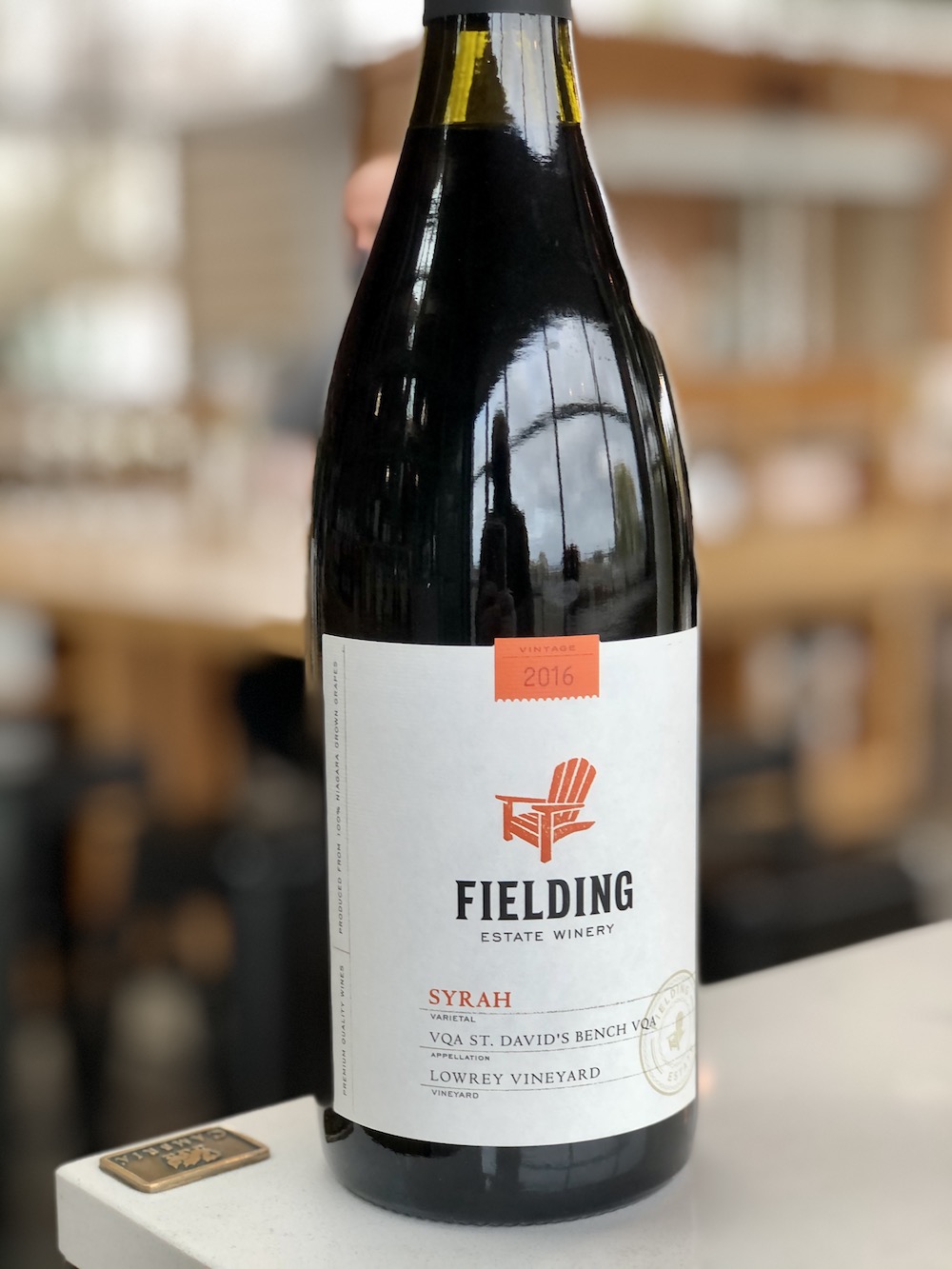
Fielding Lowrey Vineyard Syrah 2016 ($55) — Syrah is another superstar grape grown in the Lowrey Vineyard in St. David’s, and winemaker Richie Roberts knows a good thing when he sees it. This was poured beside one of two Syrahs from the 2010 vintage Roberts had left in his private cellar to show the aging potential of this fascinating wine. It was the perfect comparison as both the 2010 and 2016 vintages were similar — hot and dry with a long, worry free growing season. The 2016 is still coming around on the nose, but there is plenty of room to open up. Swirl and, if you can, decant, to reveal smoky, bold blackberries, black currants, smoked meats, black pepper, blueberries, black olives and savoury spices. It opens up beautifully on the palate with a profile dripping in dark berries and smothered in smoky/savoury/meaty notes, black licorice, eucalypt, fine grained tannins and barrel oak spices that all lead to a long, long finish. The 2010 vintage is all of that, but more plush with everything beautifully synchronized. Can cellar the 2016 10+ years if you have the patience, and even longer if you dare.

Flat Rock Cellars Gravity Pinot Noir 2017 ($35) — Flat Rock has the reputation of being a top-notch Niagara Pinot Noir producer from vintage to vintage, but in the Pinot-friendly climate of 2017, this top-tier Gravity bottling dials it up a few notches. The wine is derived from the best barrels of Pinot grown in the estate’s Twenty Mile Bench vineyards. It’s aged in French oak, only 15% new, for 10 months and is bottled unfiltered. The complex nose shows ripe black cherries, raspberries, bramble, cassis, clove, damp earth and spice notes. It’s concentrated on the palate with layers of red berries, cassis, anise, silky tannins, well defined oak spices, a supple texture and a long, finessed finish. Can easily cellar this for 5+ years.

Hidden Bench La Brunante 2016 ($85) — The blend for this showpiece Bordeaux-style red, only made in the best vintages, consists of 43% Merlot, 35% Malbec and 22% Cabernet Franc from top blocks in the estate’s three organic vineyards. The oak treatment is 100% French barrels (50% new) for 20 months and is bottled unfined and unfiltered. It is a blockbuster, one of the most structured and complex reds from the warm 2016 I have tasted, and one that will cellar for 10-15 years or more and will keep developing. It shows a dark purple colour in the glass with an intense nose of blackberries, black cherries, cassis, black currants and meaty, smoky, spicy notes. It’s rich, structured and complex on the palate with layers of dark fruits, plums, persistent tannins, sweet oak spice notes, cedar, earth and length through a long, long finish. As mentioned, buy and hold and you will be richly rewarded.

Icellars Wiyana Wanda 2016 ($85) — This is the top wine made at the estate, chosen from the best blocks grown at Icellars and culled from best barrels. The blend is 63% Cabernet Sauvignon, 20% Merlot, 11% Cabernet Franc and 6% Malbec all aged separately for 12 months in all French oak, blended together and aged a further 12 months. It’s bottled unfined and unfiltered. Adnan Icell takes great pride in extensive “research” as he embarked on starting a winery with little experience. He travelled to famous wine regions and tasted his way through as many wines as he could at some of the most iconic wineries on the planet. One that had a particularly profound affect on Icel was the famed Opus One winery in Napa Valley. Opus One is the inspiration for this wine. It’s a nice tribute to Icel’s journey to get this far this fast and, frankly, an incredible story of triumph over what would seem the impossible — to make a wine at this level from scratch with limited experience in a country he only arrived in 12 years ago. But here we are, and this wine is a wonder. It’s certainly tight at the moment, but swirl it your glass and the beauty unfolds, the rich black currants, the blackberries and kirsch. The underlying meaty notes and earth, the woodsy spices and depth of aromas that keep coming. It’s bold, rich, thick and loaded with dark fruits on the palate, the kind of ripe dark berries you don’t always see in Niagara Cab-based wines, with notes of earth, wonderful oaky spices all layered and complex and leading to a long, finessed finish. It’s too early to drink this wine with so many moving parts and tannic power, but wait for it, and you will be rewarded to a very nice Niagara cab blend.
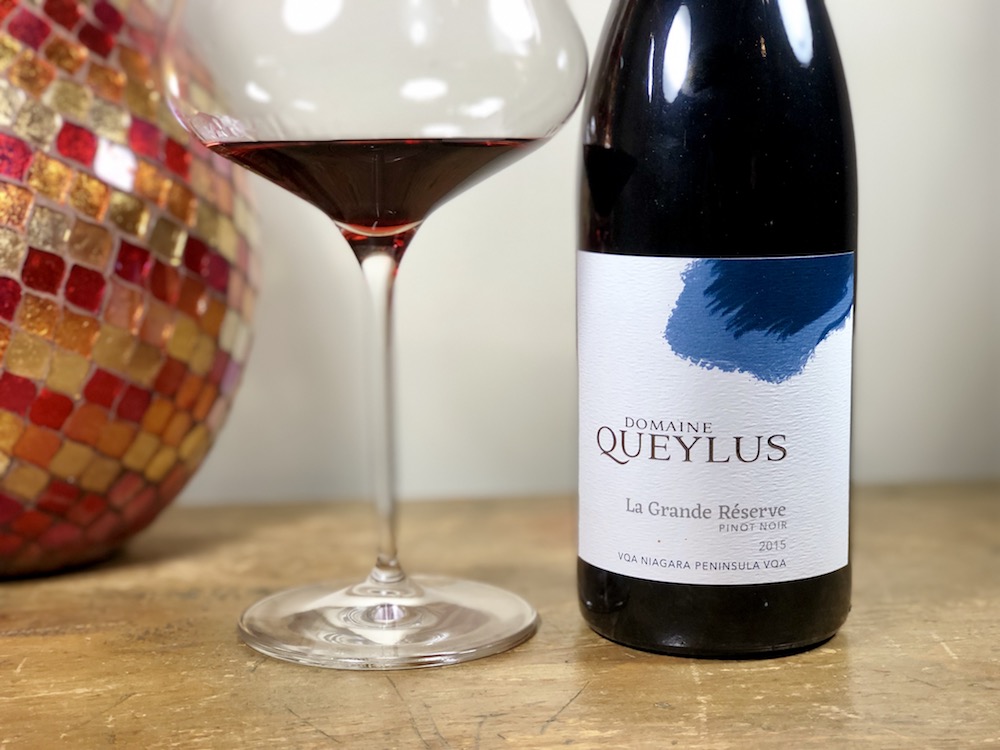
Domaine Queylus La Grande Réserve Pinot Noir 2015 ($90) — This is one of the most highly perfumed, pretty and elegant Pinots I have tasted from Niagara. Everything clicks here with a nose of crushed red berries, forest floor, river rock minerality, integrated sweet herbs, red plums, cassis and bramble notes that all come together nicely at this point. It’s like velvet on the palate, such beautiful texture with a mélange of intense raspberries, dark cherries, cranberries, touch of anise, elegant integrated spices, forest floor, graphite and length on an echoing finish. This is in a perfect place right now but would be interested in seeing it five years from now. A Niagara Pinot you must have in your cellar.
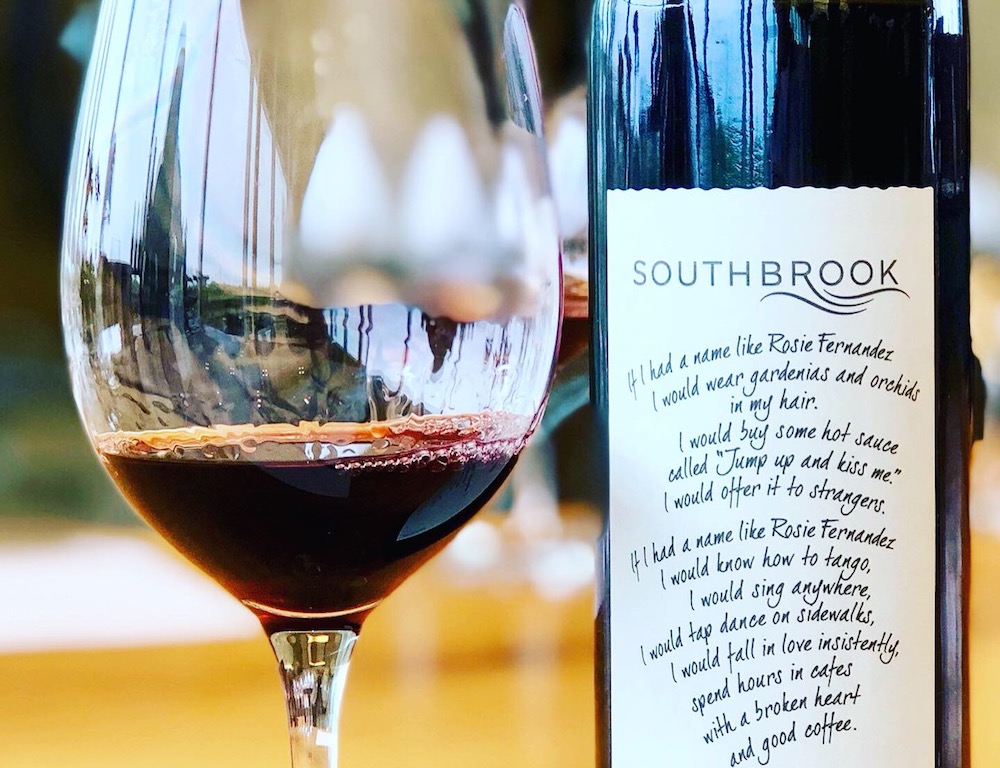
Southbrook Poetica Red 2016 ($75) — All roads at Southbrook lead to the top tier Poetica Red and Poetica Chardonnay wines in any given vintage. It is here that the top barrels from the top blocks in the estate vintage are singled out for Poetica in only the best vintages. The program began as a Cabernet Merlot labeled blend in 2007, but became known as “Red” in 2010 with the addition of Petit Verdot. These are generally legendary wines that age beautifully for 20 years or more. I feel the 2016 might even go further than that. The blend is 93% Cabernet Sauvignon, 4% Merlot and 3% Petit Verdot all from the hot 2016 vintage that produced some remarkable Bordeaux variety wines in Niagara, especially from Niagara-on-the-Lake. Count the Poetica Red 2016 among the best. The wine spends 24 months in French oak barriques, 50% of the oak is new with further bottle aging for two years. The expressive nose shows a concentration of ripe blackberries, black currants, dark cherries, elegant oak spices and mocha. Such a soulful wine on the palate with an enticing array of ripe black currants, cassis, kirsch and blackberries that marry perfectly to the woodsy spices, ripe tannic structure, mocha and toasted vanilla notes. The fruit echos on the finish for minutes with enough juicy acidity to keep it balanced and poised for many years to come. Do yourself a favour and grab a couple and put them away for further integration.
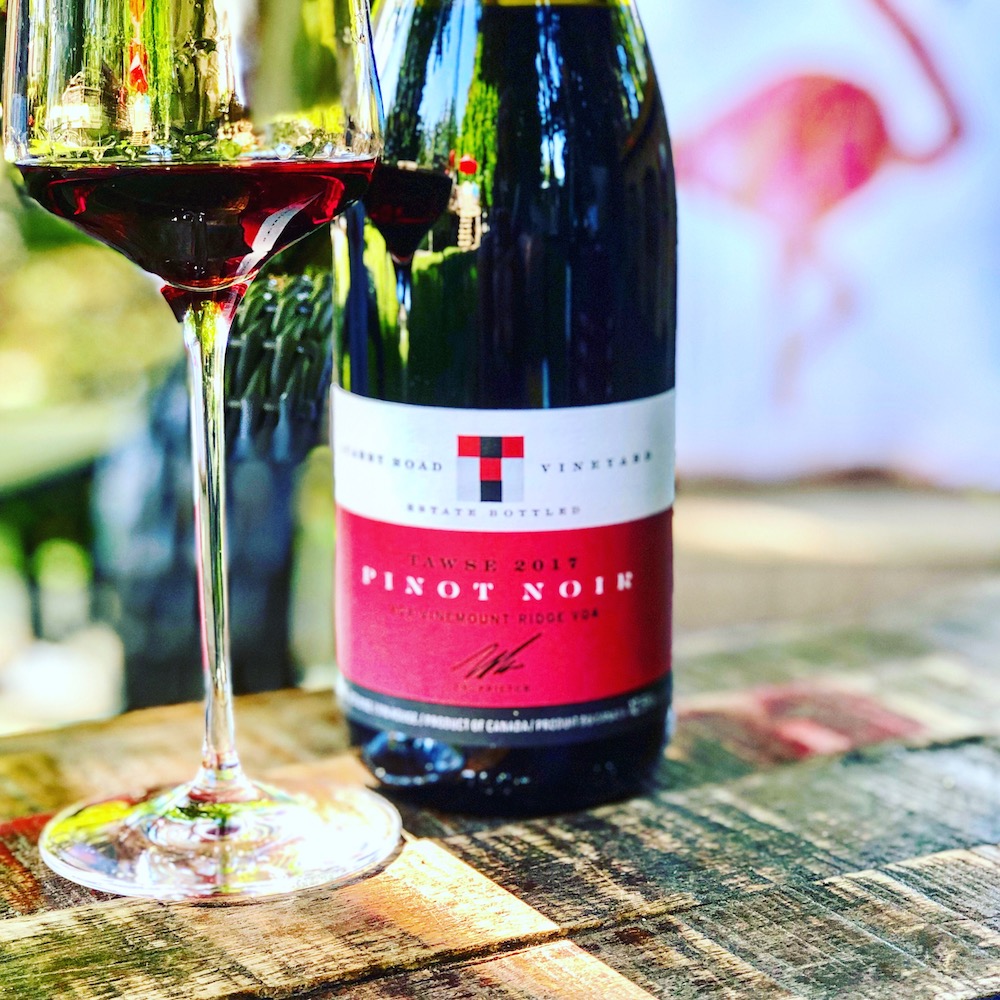
Tawse Quarry Road Pinot Noir 2017 ($36) — The Tawse Quarry Road Vineyard on the Vinemount Ridge has yielded some spectacular wines over the years. Add this one to the list. The vineyard is farmed biodynamically and is organically certified. The wine spends 12 months in French oak, 20% of which is new. It has a beautiful nose of pure black cherries, cranberries, violets, forest floor and elegant spice notes. It’s rich and meaty on the palate with crunchy red berries, earth, anise, fine tannins, soft texture, minerals and length through a vibrant finish.
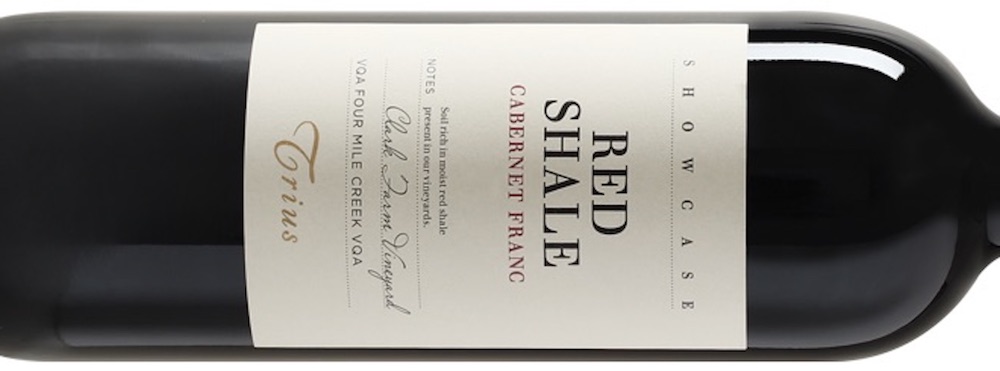
Trius Showcase Red Shale Cabernet Franc 2017 ($55) — This is culled from a single block of the Clark Farm Vineyard in the Four Mile Creek sub-appellation and aged in French oak barrels (20% new barrels) for 19 months. It has a gorgeous nose of dark cherries, brambly raspberries, cassis, woodsy spices, smoke, cocoa and anise. The first sensation on the palate is a full attack of ripe tannic structure and then a mélange of red berries, cassis, underlying earthiness, leather, cedar, toasted vanilla and spices with a long, long finish and juicy acidity holding everything together. A beautiful wine that will benefit from 5+ years of cellaring.
The Most Thrilling
White Wine of the Year
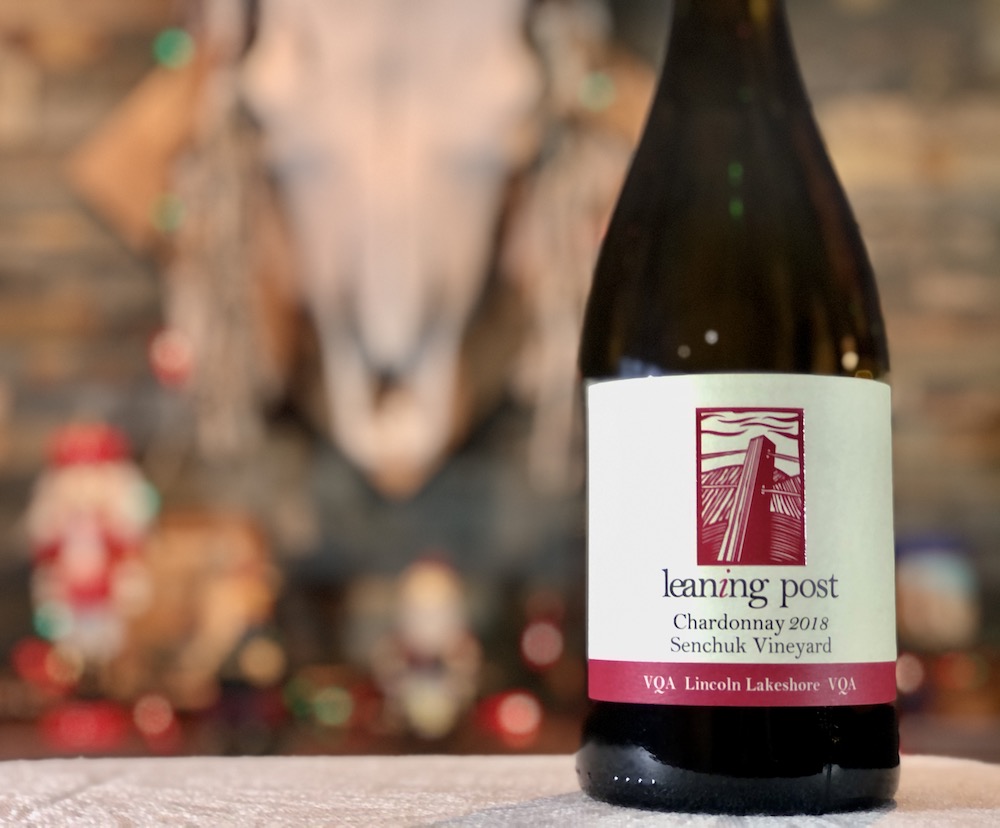
Leaning Post Senchuk Vineyard Chardonnay 2018 ($45, 94 points) — After only three vintages, Leaning Post could make a convincing case for a sub-appellation outside of what is now considered the outer limits of Lincoln-Lakeshore. When the Senchuks purchased their property in Winona, they weren’t sure what they had in terms of terroir as no vines had ever been planted on the property. The soil has a stony alluvial top, comprised of a combination of clay, silt, sand, and gravel with hard clay subsoil, which retains precipitation and minerals. With only three vintages, the Chardonnay on the property, grown in one of the coolest parts of Niagara, is showing strong characteristics particular to this vineyard. It has a pretty and highly perfumed nose of pear, lemon curd, vanilla cream, apple skin, saline minerality, or as winemaker Ilya Senchuk describes it, “a mountain stream on rocks,” then barrel spices and a unique savoury note. There is both richenss and finesse on the palate with notes of lemon, creamy pear, apple, citrus, stony minerality and lovely freshness that carries it through a long finish. Very fine Chardonnay that can be cellared 5+ years. Because this is the first time this review has appeared on Wines In Niagara, I’m including the score I gave it, 94 points.
The Rest of the Most Thrilling
Niagara White Wines of the Year
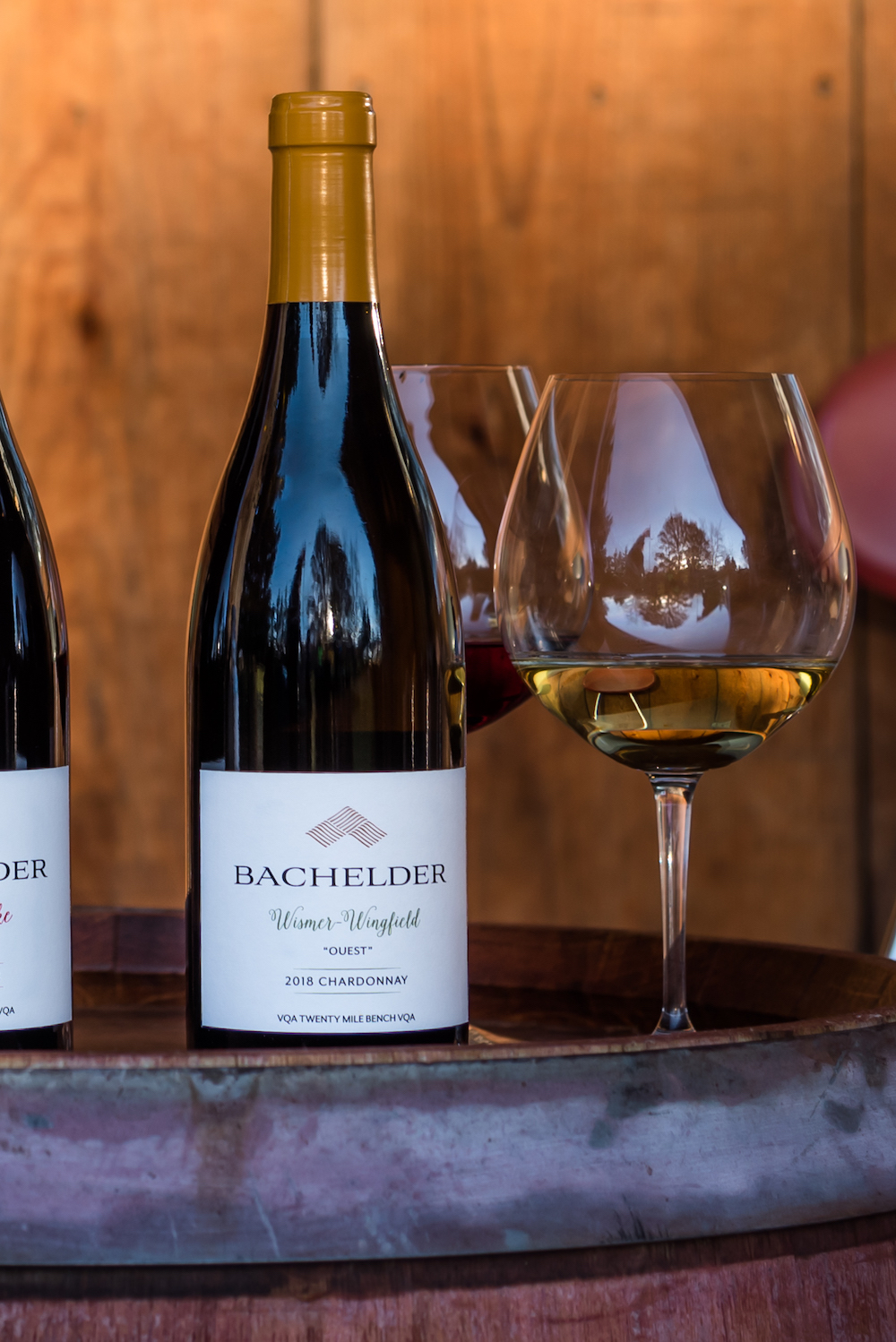
Bachelder Wismer-Wingfield Ouest Chardonnay 2018 ($48) — In the pantheon of potential “grand cru” vineyards in Niagara, Wismer-Wingfield, mined for its liquid gold from some of Niagara’s most terroir-focused winemakers led by Thomas Bachelder, this would be among the first named to such a controversial accolade. The vineyard is located 6.8 km from Lake Ontario at an altitude of 160 metres. The Wingfield parcel has always shown profound, singular terroir on a perfectly exposed, well-drained slope on the east side of Victoria Street in Vineland. Both the highest elevation and furthest from the lake for all of Bachelder’s sourced parcels (50 metres in altitude and 1,000 metres further from the Lake than other Wismer parcels), Wingfield is picked 10 days to two weeks after other Chardonnay vineyards. The vines are now nearly 30 years old, planted in 1993 on lighter silty/clay and dolomitic limestone soil, it shows the classic Vineland (as distinct from Jordan) combination, of what Bachelder calls “plush richness and tight minerality.” The Wismer-Wingfield block has always been sourced from the western part of the parcel, which makes for a long hang-time and “an intense, rich, noble flavour, overlaid by a tight, long minerality.” It has been named (more than once) as Wines In Niagara’s Most Thrilling Wine of the Year and consistently scores 93+ points and is yet again the superstar in the 2018 Bachelder lineup. Go ahead and compare this to Puligny-Montrachet, or better yet, taste both side by side and make your own call. It has such a complex, if not just a tad tight right now, nose of saline/flinty minerality, a floral note of elderflower, ripe pear, lemon, cream, bin apple, vanilla toast, sweet oak spices and encased in pure elegance that will take patience to fully reveal itself. Such power, grace and complexity on the palate with pure pear and bin apple fruits, lemon zest, layers of saline minerality and flinty nuances with subtle biscuit-y notes, elegant vanilla toast and spice with fresh, lifted finesse through a long, long finish. Tight, yes, but wait for this to fully reveal itself. I sense another blockbuster that Chardonistas crave. Cellar 5+ years, but try at least one of them now so you can watch the evolution. The 2017 was released earlier in the year and even surpassed the 2018 vintage. I suspect the ’17s are gone, but you might be able to scoop up some these wonderful current vintage Chards.

Henry of Pelham Speck Family Reserve Riesling 2018 ($28) — This top Riesling made at the estate is from vineyards on the Short Hills Bench planted in 1984 to the Weis 21b clone. This wine is always a winner and among the best Rieslings made in Niagara vintage to vintage. It has an enthralling nose of lime, grapefruit, stony minerality and pinch of ginger. On the palate it’s powered by that saline, stony minerality driving the fresh-squeezed lime, the grapefruit, the complex array of pear, peach and quince that’s all supported by racy acidity. This is a very good Riesling that will improve for 7+ years and only get better. Bravo!
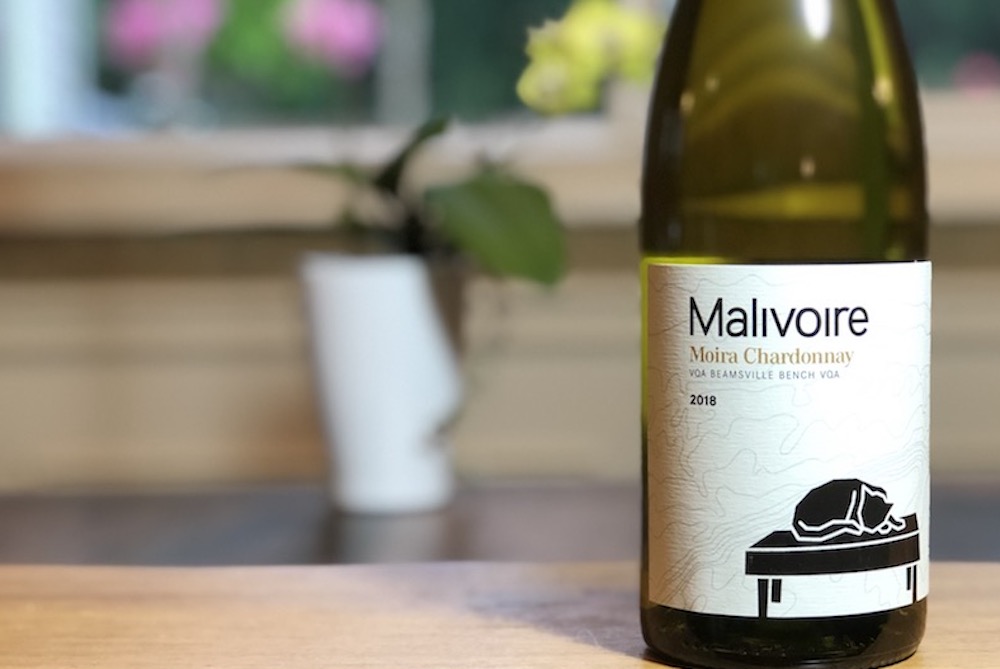
Malivoire Moira Chardonnay 2018 ($35) — This hand harvested Chardonnay from the Moira Vineyard, the birthplace of Malivoire’s original wines purchased on the Beamsville Bench in 1995, was whole cluster pressed with half the fruit going to French oak barrels and the other half straight into stainless steel for fermentation and aging for 20 months. Just 62 cases were made. It has a lovely and enticing nose of creamy pear, ripe apple, stony minerality, spicy oak notes, buttered toast and vanilla. It’s rich and creamy on the palate and laced with wet stone minerality, ripe pear, quince, toasted vanilla/almond, elegant spice notes and touch of lemon zest on the finish. Really beautiful Chardonnay that I’m sure Moira Saganski, the wife of Martin Malivoire, is very happy with.
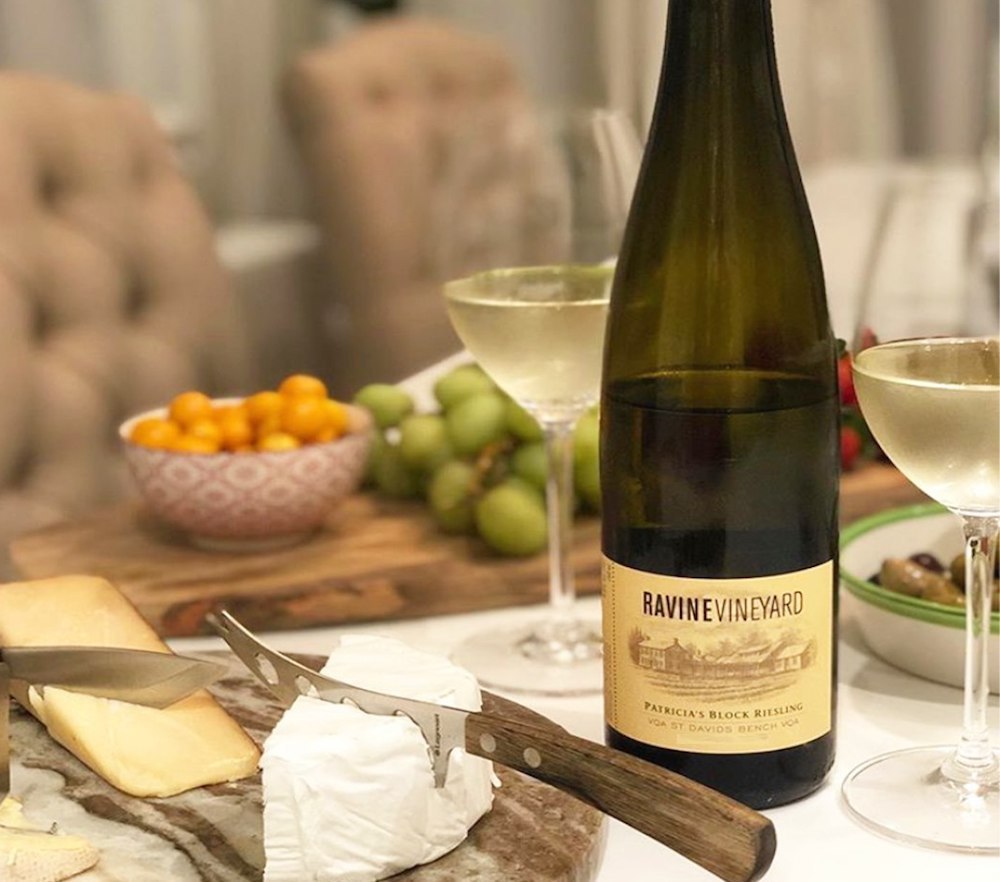
Ravine Patricia’s Block Riesling 2019 ($35) — Built with 40 g/l of RS, this is a joyous wine sourced from a unique portion of the estate vineyard that usually yields some botrytis fruit from a dip in the topography that traps fog and moisture. Tomek made the decision to eliminate the noble rot for her first Patricia’s Block. This is more perfumed than the above wine, with lemon curd, lanolin, honeysuckle, lime/citrus and interesting spicy/mineral accents. It’s layered and honeyed with palpable tension from the searing acidity, sweetness and minerality providing a balanced attack of lemon, lime, peach and tangerine with a finish that goes on and on. I expect a blockbuster here once it settles down. Bravo. Tasted twice.
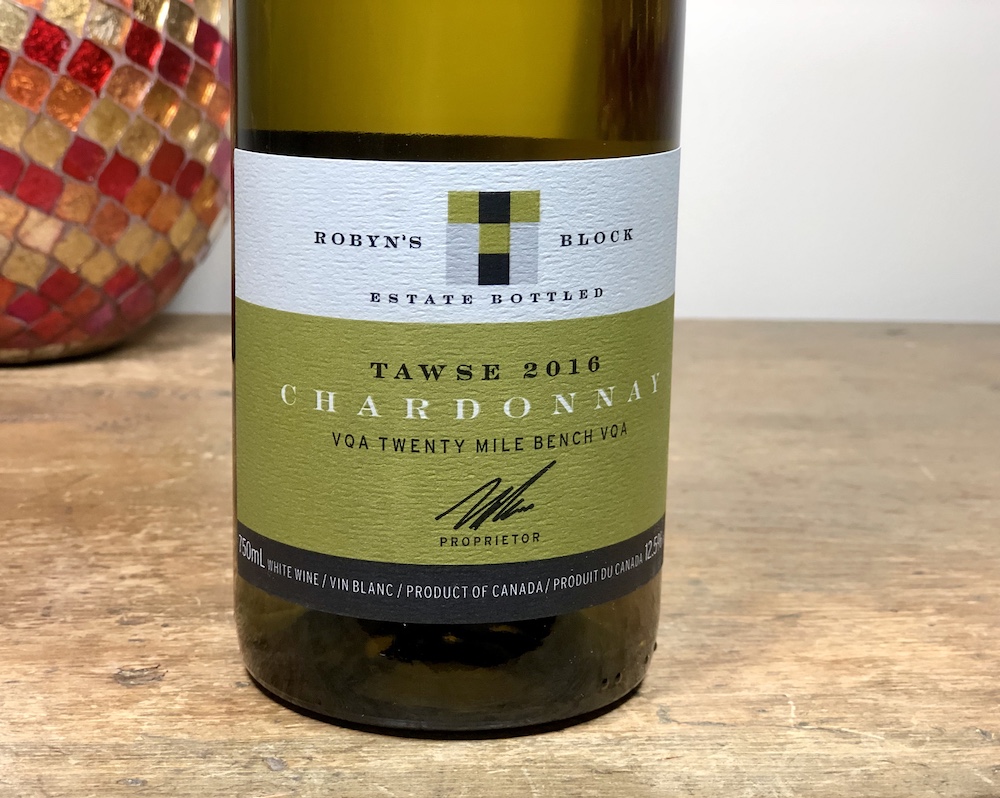
Tawse Robyn’s Block Chardonnay 2016 ($46) — Consistently one of the finest Chardonnays made in Niagara and the riper 2016 version follows that winning trend. Certainly more robust than previous vintages with pronounced pear, ripe apple, saline minerality and elegant spice notes. This Chardonnay is layered and textured with ripe orchard fruits, tingly acidity, stony minerality, creamy notes and elegance that benefits from a zesty citrus accents on a finessed finish. Drinking perfectly right now, but can cellar up to three years.
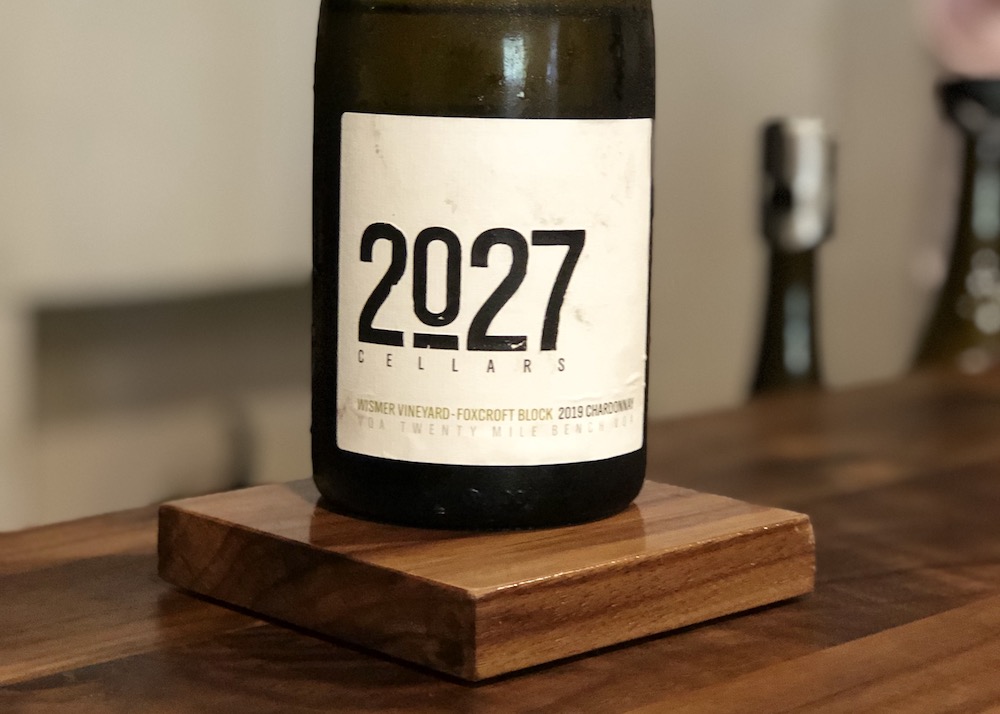
2027 Cellars Wismer Vineyard-Foxcroft Block Chardonnay 2019 ($30) — This single-vineyard Chardonnay epitomizes, for me, what 2027 Cellars is all about. Kevin Panagapka has been sourcing grapes from this special block in the Wismer Vineyard on the Twenty Mile Bench for over 10 years. It has been Wines In Niagara’s Most Thrilling White Wine previously and never strays from being one of the top Chards made in Niagara in any given vintage. This follows closely to all the other vintages of this wine and is made similar to all the others — 100% whole cluster pressed, wild fermented, wild malo with 100% French oak aging (20%, new oak). It has a perfumed nose of ripe pear, lemon blossom, crushed stones, apple, gunflint, toasted almonds and oak nuances. It’s more overt on the palate with rich pear fruit, quince, stony/saline minerality, zesty citrus, elegant and subtle spice and toasted almonds with electric acidity lifting the fruit through a long and finessed finish. Amazing Chard that is true to the soil where it was grown. So youthful right now and a definite candidate for the cellar, say 5+ years.

Two Sisters Riesling 2018 ($35) — A blend of Wismer-Foxcroft Vineyard on the Twenty Mile Bench and Lenko Vineyard on the Beamsville Bench, this is classic Niagara Riesling with a gorgeous nose of lime, grapefruit, lemon, Mandarin orange, white flowers and wet stone minerality. It has lovely texture on the palate with an attractive mélange of lime, citrus, tangerine, stony minerality and mouth-watering acidity that keeps it fresh lively through an echoing finish. Great aging potential here, 10 years plus.
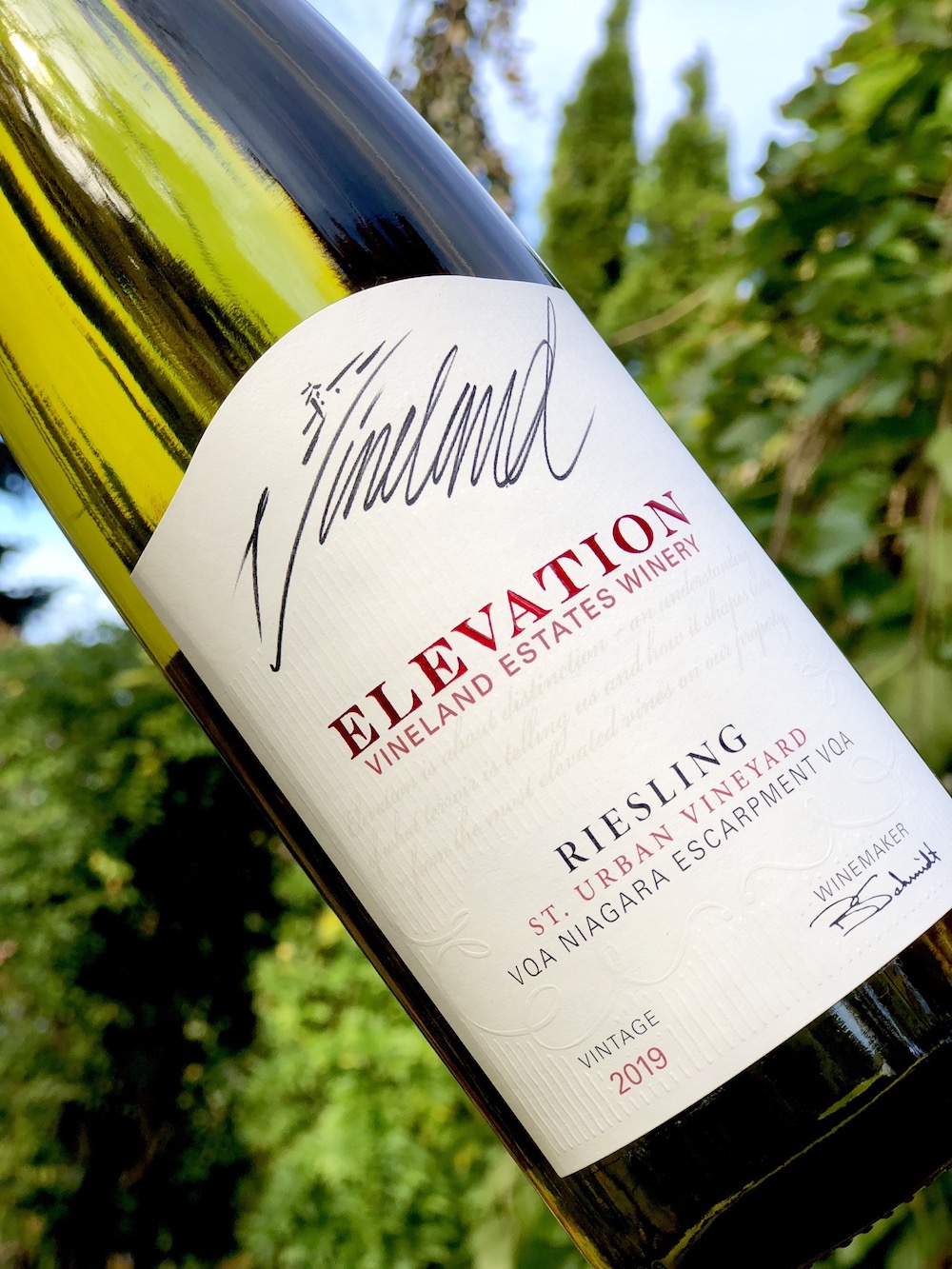
Vineland Estates Elevation Riesling 2019 ($20, 93 points) — Such a pretty and expressive nose on this single-vineyard Riesling from the historic St. Urban Vineyard planted in 1979. Look for gushing lime, sweet canned pear, profound wet stones and saline minerality, grapefruit and green apple. Certainly off-dry at 45 g/l and light on the palate at 7.5% ABV but offset by a firm acidic backbone that brings a nice tingling tension in the mouth. The citrus, apple, pear and peach fruits have that yin-yang thing of sweet/tartness that build in intensity through the vibrant finish. There is a lovely wild honey note that provides nice texture and flavour on the mid-palate. Cellar 10 or even 15 years and watch this beauty show its true potential. Great value, top-notch Niagara Riesling from the Twenty Mile Bench.
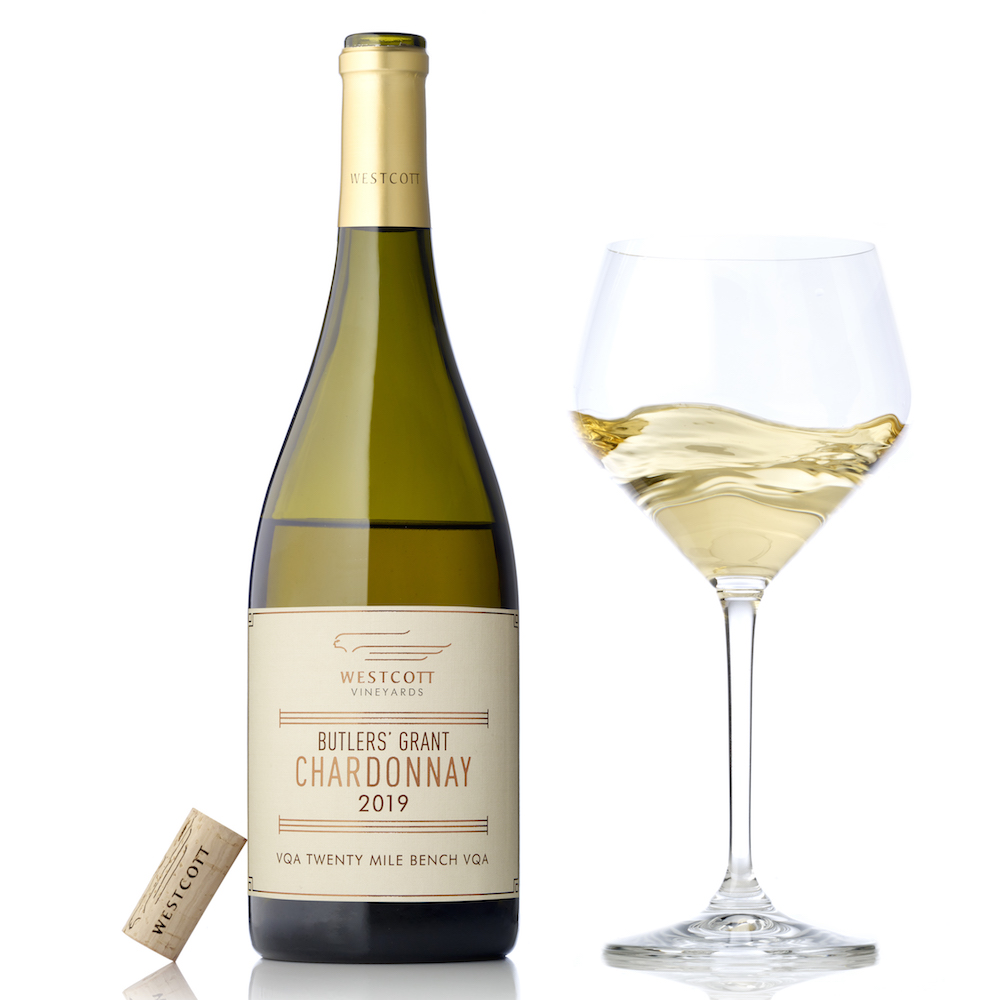
Westcott Butlers’ Grant Vineyard Chardonnay 2019 ($45, 93 points) — This is the first Chardonnay from the newly acquired Butlers’ Grant Vineyard in the Twenty Mile Bench sub-appellation. “There was a lot of elegance and restraint this year (2019),” winemaker Casey Kulcyk says. That’s a pretty accurate assessment as this is a refined, tight and elegant Chardonnay with plenty of upside as it develops. The nose takes a few minutes to open up then reveals a beautiful saline freshness with apple skin, pear, flinty minerality, lemon peel, some toasty/spicy notes and subtle caramel. It has depth and precision on the palate with quince, citrus, flinty/matchstick notes, length, vibrancy and a finish that echos for minutes. I feel this wine will age beautifully for 6+ years and will build in intensity in the cellar.
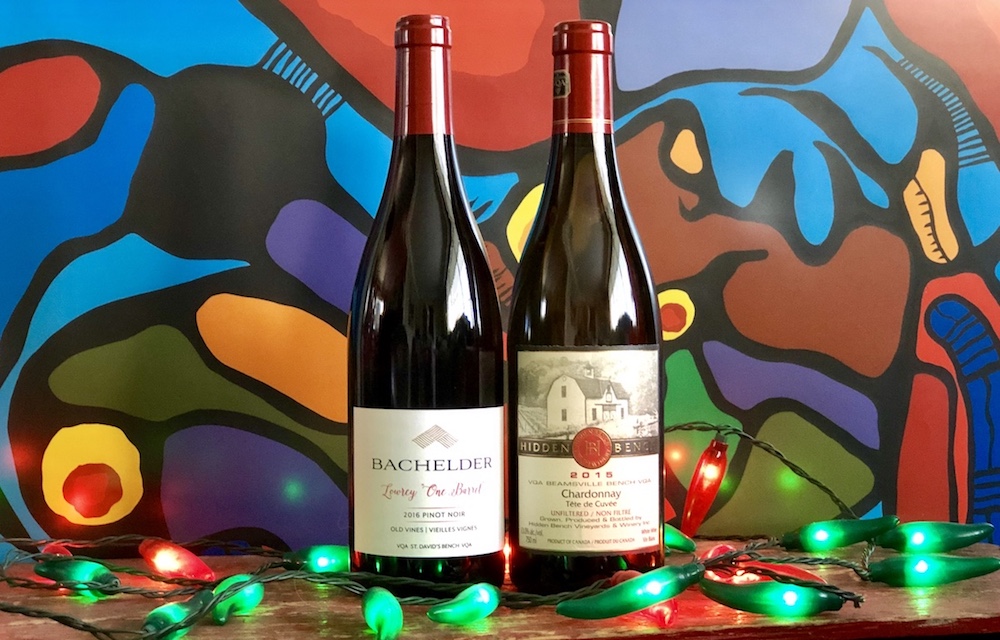
For a list of the most thrilling wines of 2019 go here.








Comment here